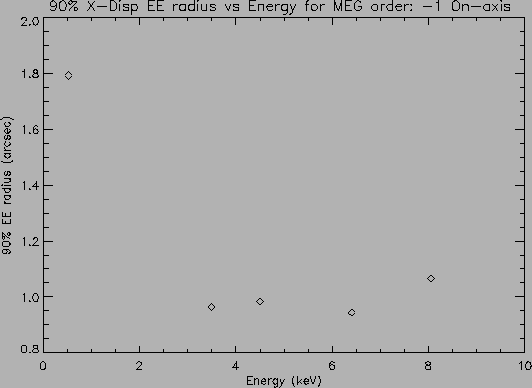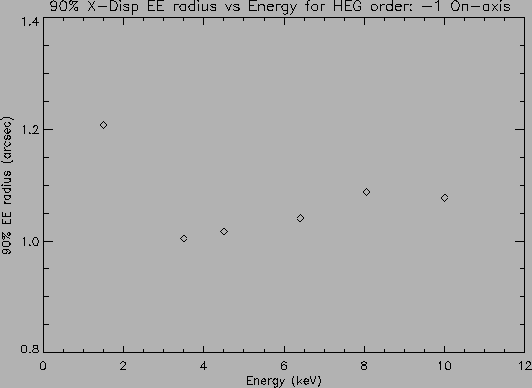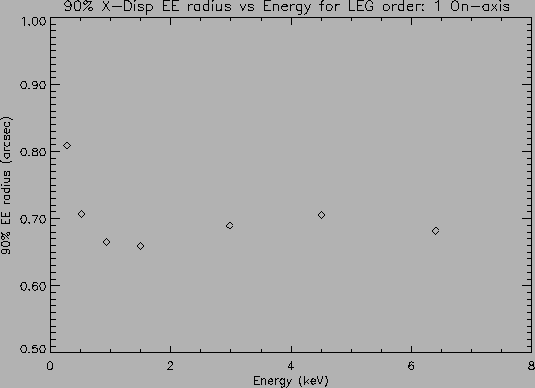Accurate flux calibration of the extracted spectra requires knowledge
of the fraction of the source photons which fall in the extraction
aperture for the spectrum. This fraction, the encircled energy (EE),
is modeled here with MARX data and this can be used to determine
the absolute flux for a spectral line with a known extraction
aperture. The width of the 90% EE radius in the cross-dispersion
direction is shown below in the plots as a
function of energy. For the LSF's discussed here the extraction
region is always greater than the 90% EE fraction so that the
correction for flux lost from the LSF is small (<0.2%). The
default data extraction region for tgextract is
![]() 7
7
![]() wide so that correction for lost photons is
negligible.
wide so that correction for lost photons is
negligible.

|


|